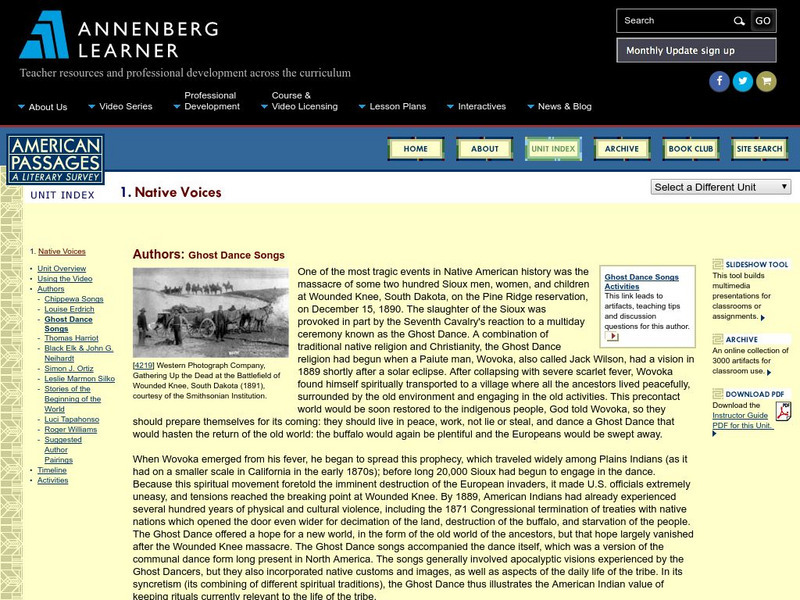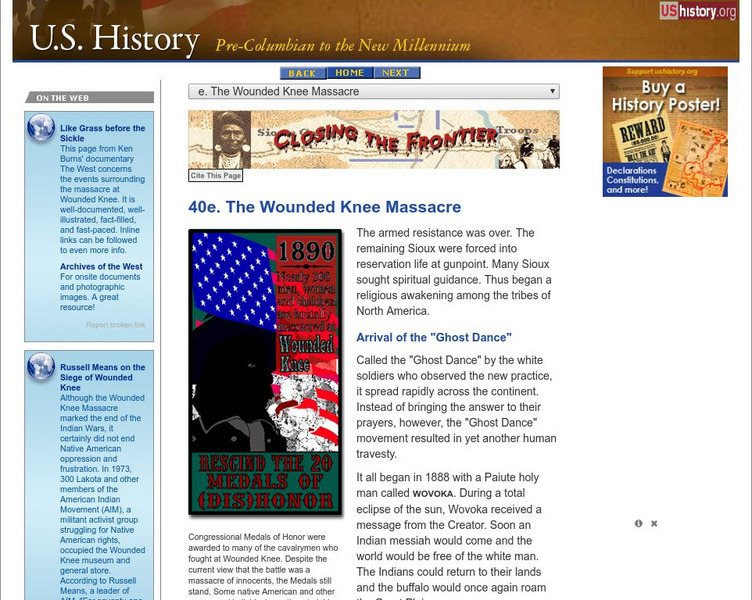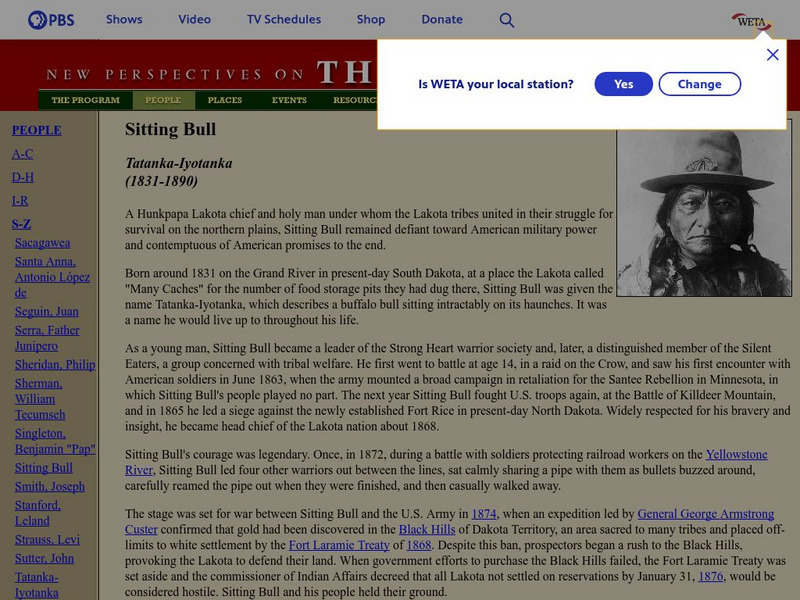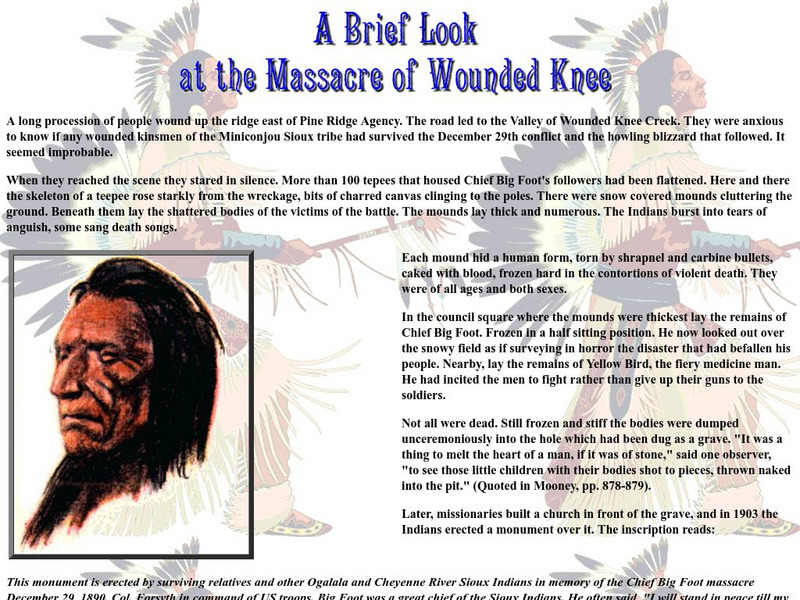Annenberg Foundation
Annenberg Learner: American Passages: Native Voices: Ghost Dance Songs
A Native American Paiute man known as Wovoka, after seeing a vision, started the Ghost Dance religion which had many songs to carry on its oral tradition. Click on the tab "Ghost Dance Songs Activities" to explore activities and photos.
Khan Academy
Khan Academy: Us History: 1865 1898: The Ghost Dance and Wounded Knee
Explains the origin of the Ghost Dance movement and the massacre of the Sioux that happened at Wounded Knee. Includes questions for students.
Science Bob Pflugfelder
Science Bob: Make a Static Powered Dancing Ghost
Detailed instructions for making a static powered dancing ghost using common supplies.
Other
Idaho Mountain Express: Wovoka, Lame Deer, Rolling Thund
A great description of Wovoka's religion and the influence of the "Ghost Dance." It also describes how the "Ghost Dance" has evolved since his death.
The History Cat
The History Cat: War on the Great Plains: The Last Indian Wars
Learn how the 30-year Indian Wars started and about the battles that were fought over those years. Describes the emergence and growth of the Ghost Dance movement that was initially envisioned by a Paiute medicine man named Wovoka. White...
Independence Hall Association
U.s. History: The Wounded Knee Massacre
Read about the phenomenon of the Ghost Dance that was causing a religious reawakening with Native Americans in the 1880s. See how this caused the travesty at Wounded Knee Creek where the U.S. Army attacked peaceful Sioux who were trying...
PBS
Pbs: New Perspectives on the West
This in-depth resource presents a history of the American West from pre-Columbian times until World War I with profiles, documents, and images. It encourages visitors to link these into patterns of historical meaning for themselves....
Other
The Weekly South Dakotan: South Dakota History for 4th Grade
From the very beginning and through the twentieth century, this comprehensive collection of lessons will enrich students studying the history in between and the effects on South Dakota.
Other
Wounded Knee Museum
Virtual tour of the massacre at Wounded Knee from a museum dedicated to preserving the history of what happened there.
PBS
The West: Sitting Bull Tatanka Iyotanka
This is a biography of Lakota Indian Chief Sitting Bull who led his tribe in the Battle of the Little Bighorn against General George Custer.
Khan Academy
Khan Academy: Ap Us History: Period 6: 1865 1898
This Khan Academy resource provides a table of contents with notes for several sections of AP US History: Period 6: 1865-1898.
Digital Public Library of America
Dpla: The Wounded Knee Massacre
This primary source set uses documents, photographs, government records, and news reporting to explore the 1890 massacre at Wounded Knee and its historical impact.
A&E Television
History.com: 10 Things You May Not Know About Sitting Bull
Get the facts about one of the most legendary Native Americans of the 19th century. Sitting Bull was born around 1831 into the Hunkpapa people, a Lakota Sioux tribe that roamed the Great Plains in what is now the Dakotas.
Ibis Communications
Eye Witness to History: Massacre at Wounded Knee, 1890
This article provides information about the Massacre at Wounded Knee. Gives background information on why and how the battle happened and includes a first-hand account of what occurred at the battle from an interpreter for the Army who...
PBS
Pbs the West: Big Foot (?? 1890)
This article focuses on the massacre of Chief Big Foot and his followers at the Massacre of Wounded Knee.
Country Studies US
Country Studies: The Plight of the Indians
This site explains how as westward expansion grew, more and more Indians encountered settlers, ranchers and miners who sought life, land, and riches out West. Conflicts between settlers and Indians soon involved the federal government...
Other
Cyber Learning World: A Brief Look at the Massacre of Wounded Knee
Read an interesting article on the massacre at Wounded Knee written in an engaging way by a high school social studies teacher.











